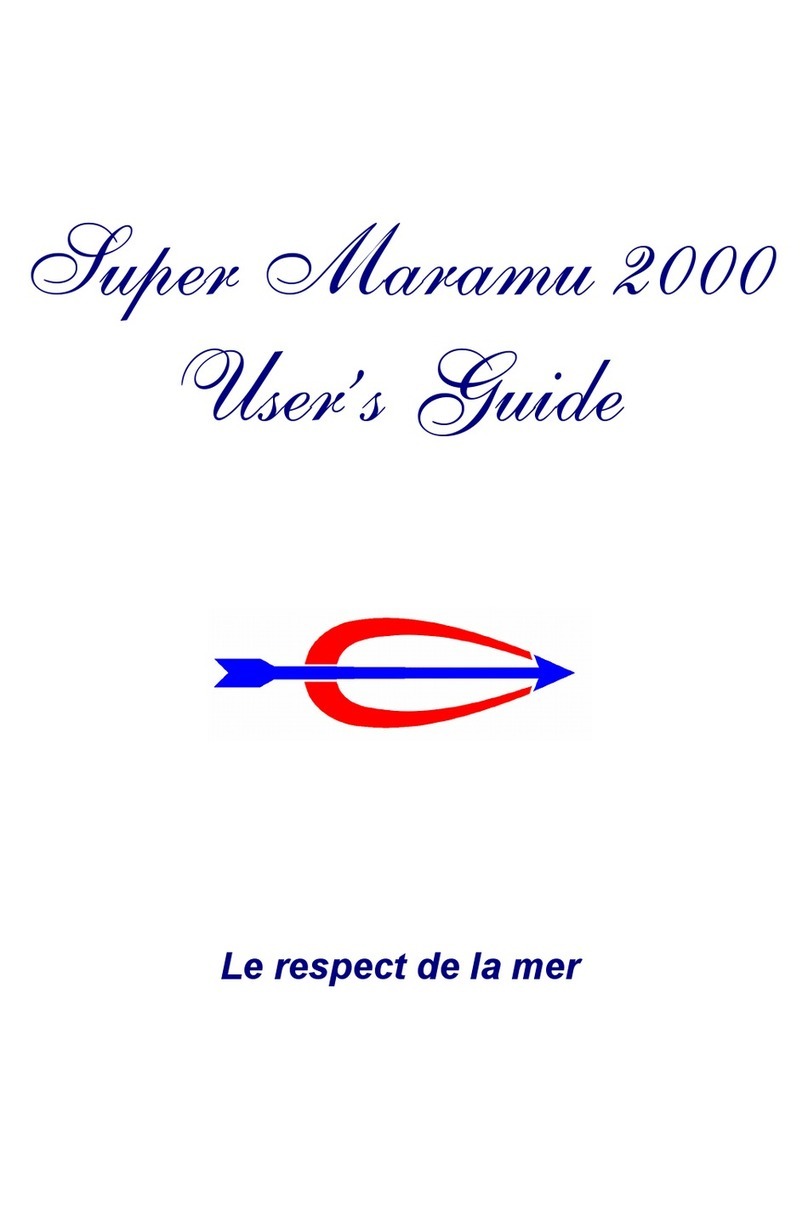1
2 Guided tour of the Super Maramu 2000
2.1 Electric power from the AMEL point of view
Most of the electrical equipment in board of the Super Maramu 2000 works with in 24 V DC.
This energy is stored in batteries that need to be charged regularly. Ideally, charging
should be done promptly produce when needed.
When the boat is in a harbour, connected to the shore power, batteries are charged
automatically with the 30 A charger (optional) which is less greedy than the 0 A.
When the boat sails, a lot of 24 V equipment (automatic pilot, electronics, rig and sail furling
system, winches, refrigerators, lightning, …) work with the batteries’ energy. If we don’t pay
attention, they will be quickly discharged. Thus the generator should be switched on
regularly to charge the 24 V batteries. If it is possible, schedule not a daily long time, but 3
shorter periods of 1 and a half to 2 hours. The next chart shows a solution, but your own
experience can improve it.
1 time early
in the morning 1 time near 13 or 14 PM 1 time near 19 or 20 PM
generator
+
0 A charger (first)
+
30 A charger (1 min after)
During the night, automatic
pilot, lights, refrigerators,
electronics, have discharged
batteries. The generator
delivers 220 V, useful at
breakfast to warm water, wash
up, warm the boat, …
Good for batteries, generator,
refrigerators, pumps, …
220 V is useful for hot water,
microwave oven, dishwasher,
air conditioning, …
At dinner time, for the same
reasons as previously, and to
have good batteries for the
night.
At the harbour : 30 A charger
In the open sea : 50 A charger + 30 A charger (1 min after)
to 6 hours seem to be reasonable, regarding to the needs of the crew.
When the boat is at anchorage, 24 V uses are less, and 3 to 4 hours of generator’s work
should be enough.
Batteries wear out, not due to their age, but according to their number of cycles of Charge /
Discharge. That is why batteries of an occupied boat, but most of the time connected to
shore power, will last longer (4 years max.) than batteries on a boat who sails or at the
anchorage most of the time. In that case, lifetime of the batteries will probably not exceed 18
months.
Batteries usually fail because they are not charged enough.




























